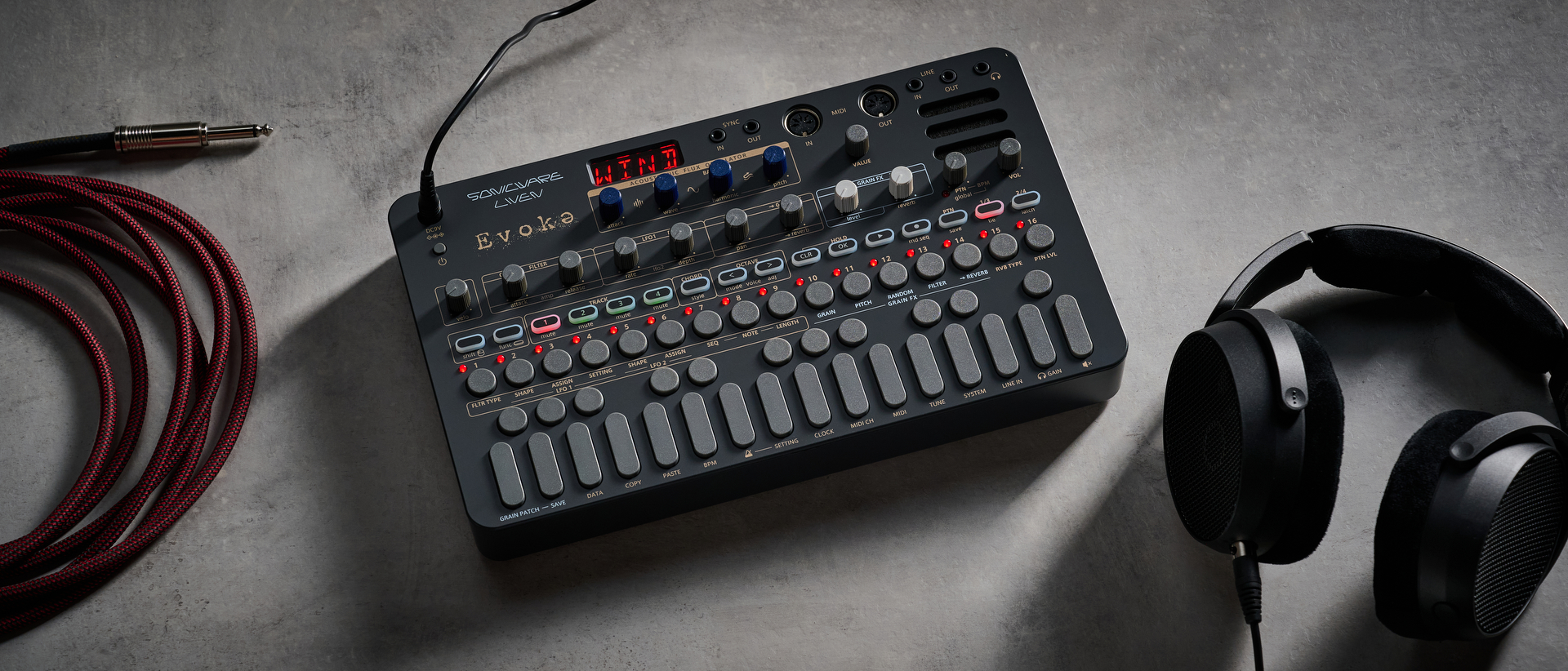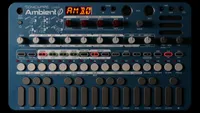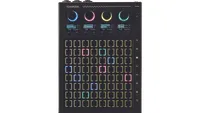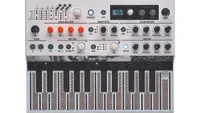MusicRadar Verdict
Evoke continues Sonicware’s quest for different-sounding and good-value hardware boxes, a mobile and inspirational module that is easy to compose with anywhere, and at any time. It won’t be for all producers and will get you some weird looks on the bus or train, but that Acoustronic Flux Oscillator is almost worth the asking price for the name alone.
Pros
- +
Nicely-focused leftfield and chilled sound.
- +
Good sequencer and hold features.
- +
Encourages real-time sound design.
- +
Great effects.
Cons
- -
Although the effects are great, there's not many of them.
- -
It is a unique sound, so not for the masses.
- -
No AC adapter included.
MusicRadar's got your back
What is it?
In order for any piece of music gear – or anything else, for that matter – to stand out in this shouty world, it needs an instant USP; one fast reason for you to consider reading on, watching more, or, ultimately, shelling out.
Sonicware is usually pretty good at its messaging, not least with its naming conventions, delivering a set of hardware sound modules where their titles do much of the heavy lifting – Ambient, Lo-Fi, Bass & Beats being the obvious examples.
The company’s new Liven Evoke doesn’t have such an instant ‘oh I get it’ tag, but it does boast an ‘Acoustronic Flux Oscillator’, surely the most unique of selling points this side of Hill Valley from Back To The Future.
“This is what makes time travel possible,” that film’s Doc Brown said of his flux capacitor, and it turns out that Sonicware’s ‘flux’ feature is also linked to time travel. Well, at least sonically anyway.
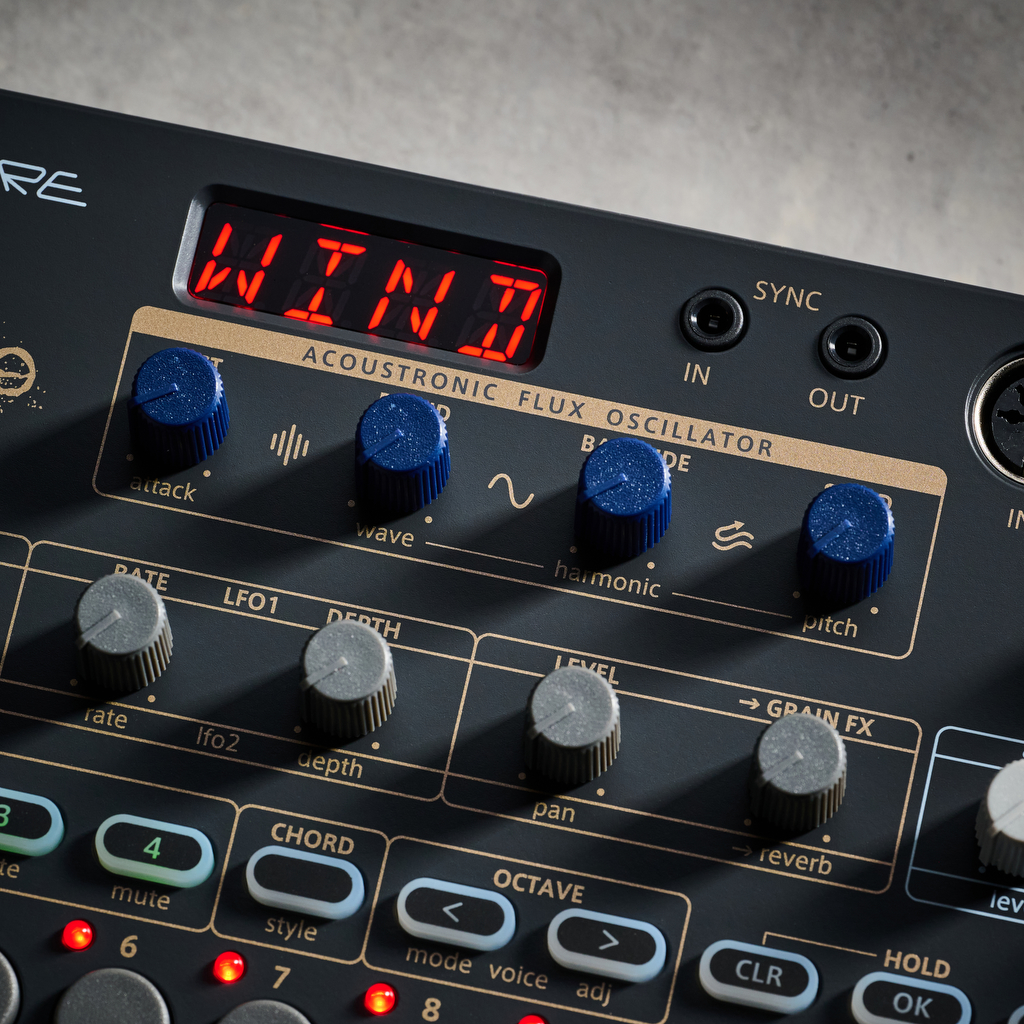
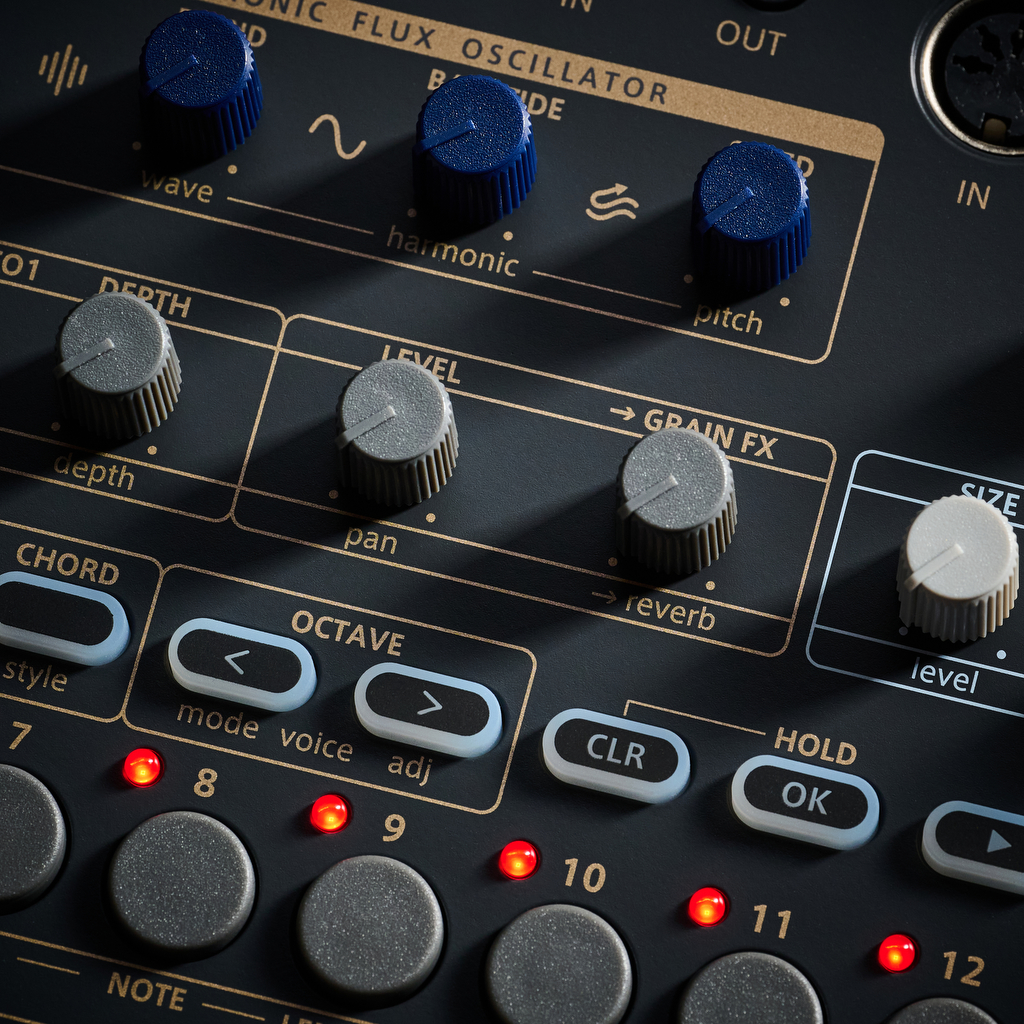
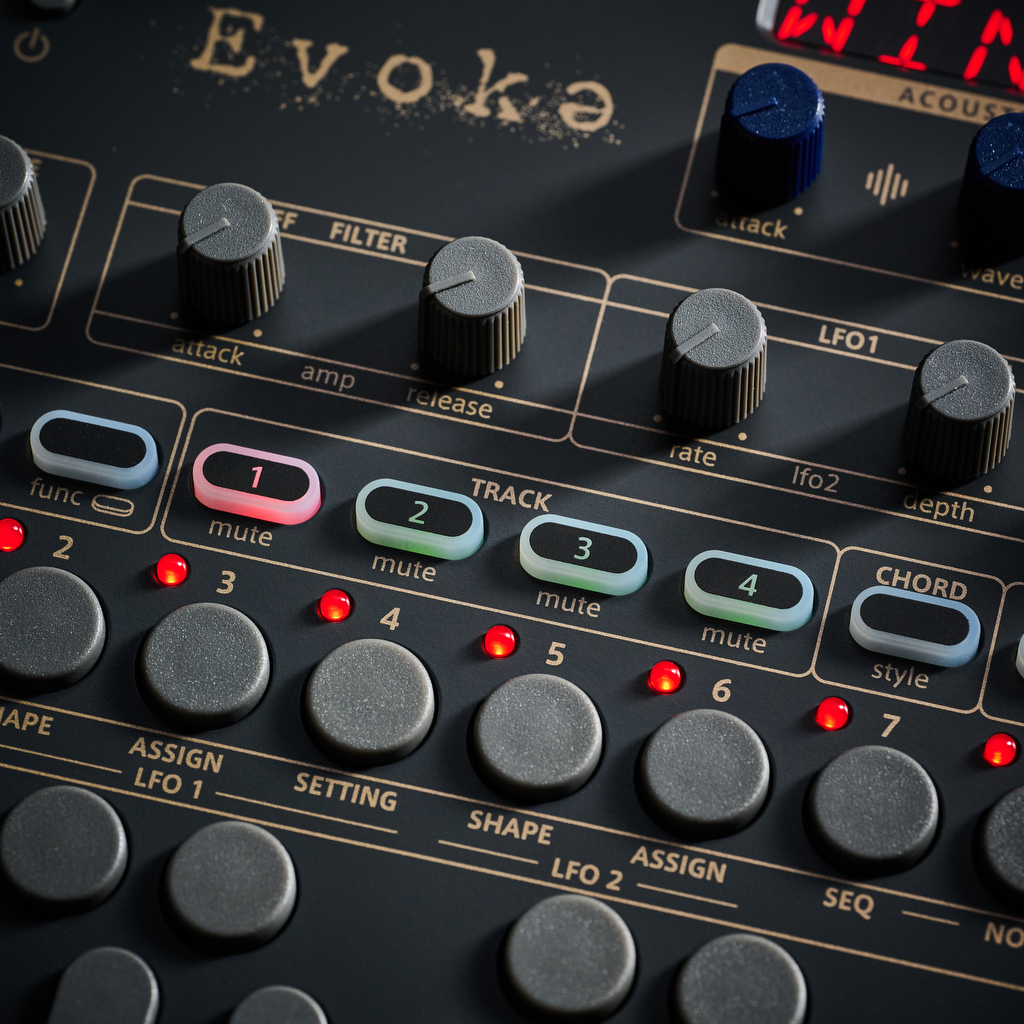
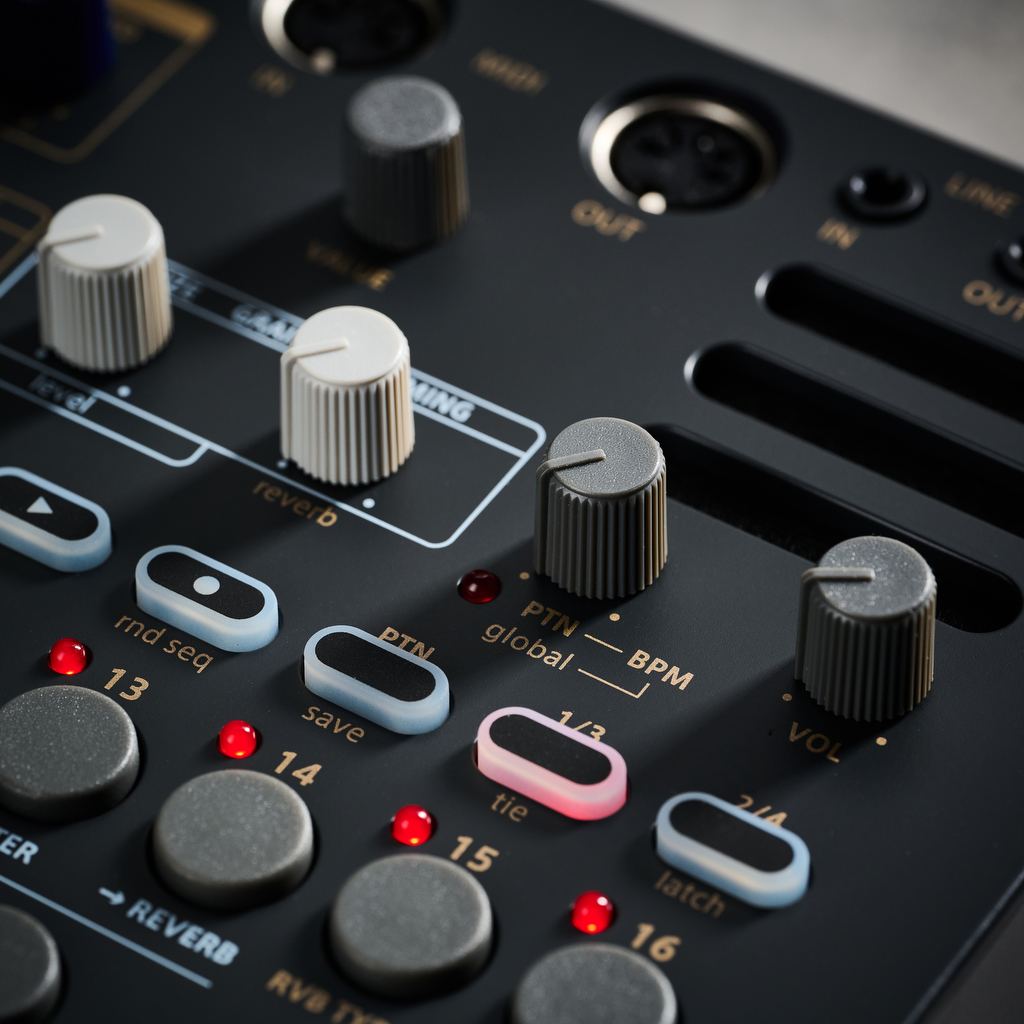
What is Liven Evoke?
Evoke is so named because it aims to take you on a nostalgic journey, with that core oscillator blending classic synth waves and acoustic sounds – hence the ‘Acoustronic’ name. You then combine the result with a granular effect and ‘Multi-Dimensional’ reverb to deliver ambient washes and drones from distant summer’s gone; timbres of fleeting moments, fragile memories, string orchestral elements, and grainy ambiences. Time travel indeed!
So the module is both evocative and timeless, and we’re certainly getting flux capacitor vibes, but the core oscillator is also named as such because it helps deliver moving tones – both literally and emotionally. They are ‘in flux’, then, with timbres modulating and morphing by as much or as little as you like.
Add in a four-track sequencer, one-finger chord and arpeggiator play, battery power and an on-board speaker, and Evoke could well be the portable music maker that you throw in the back of the DeLorean to use wherever – and, importantly, of course, whenever – you feel teary-eyed and nostalgic, or future inspired.
Want all the hottest music and gear news, reviews, deals, features and more, direct to your inbox? Sign up here.
Performance
Getting around Evoke is pretty straightforward. Starting with that Flux Oscillator, you get a Blend control to mix between the 34 acoustic instrument sounds (chosen with the left dial) and 22 electronic wavetables, selected by hitting Shift>Blend. This Shift button is an important one to find as it opens up the second option shown at the bottom of most buttons and dials. You can also ‘hold’ this with a caps lock-style Function button to its right.
Sounds can be constantly in flux, where you press a note and the selected patch will eventually start modulating backwards and forwards over its duration. This is controlled with the Backtide dial which adjusts the level, but you can also control both the pitch and speed of the modulation. Just with the Blend and Backtide dials, you can pretty much grapple with Evoke’s main USP, then, as the Acoustronic Flux Oscillator comes alive and delivers both its nostalgic time travel journey and moving sounds.
Beneath the four main dials, you get the main synth and effect controls, familiar options to change filter/envelope parameters, track levels, and the dual LFO and effect settings. You can also access the four tracks of the sequencer (see below), octave up or down buttons, and a fulsome one-finger chord mode, which is very easy to implement and change key – another great composing tool.
One feature that we really rate is the extended Hold mode. Normally, hitting the Hold button simply means the notes you play on the keyboard are held on so you can go off and start tweaking the sound with a synth’s knobs. That is present and correct here, but an expanded ability lets you hold notes in each of the four tracks. Hold a string note in track 1, for example, and a pad in track 2 and play some arpeggios in track 3. You get numerous options to add or clear notes and tracks, and it’s great for experimenting with ideas (or even performing) before committing them to the sequencer.
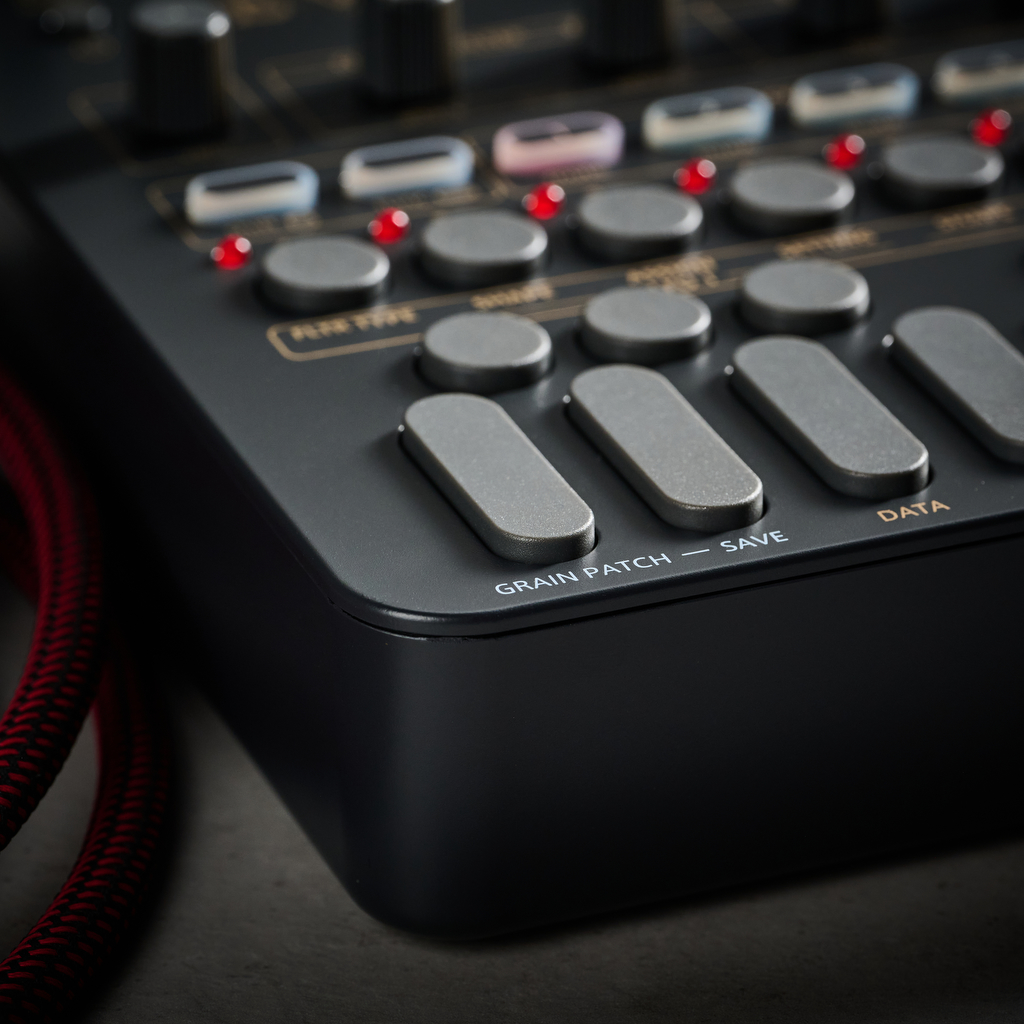
Talking of which, the sequencer on Evoke is surprisingly well featured, a 4-track affair where you can input notes step-by-step across 16 steps or record in real time. You can get a great feel for this feature by running through the 16 on-board patterns (via the Ptn button), which are essentially example tunes playing over four tracks, and a great launchpad for your own ideas.
Where Evoke differs from other similarly featured boxes is that it encourages sound design all the time, and particularly when sequencing. While you can choose individual sounds across each track – piano, cello, whatever – Evoke almost pushes you into sculpting the sounds as you go. You’ll soon find that there’s more on offer than simple filter tweaking here as you can easily make patterns and sequences move and come alive via the Blend, Backtide and Speed controls.

This means you might choose a piano for one track, but then bring in more of a synthesised blend, or add reverb and grain effects to completely transform it. Not only that, but you can modulate lots of parameters to have, say, the Blend control being modulated by one of the two LFOs. This obviously adds a lot of movement but there are also 16 Grain Effect patches to choose from, where different sets of these movements are applied to the effect, allowing you to easily get something that sounds in sync (although getting Evoke and its tracks out of sync is just as chilled).
And this is really where Evoke excels, in its ability to transform sounds and sequences as you go, to create ambient and atmospheric walls of movement, or to be as out there as you like. Start off by bringing a cello to the party by all means, but leave with a goody bag of washes and dreams, all composed as you sit on the back of the bus. Those passengers are loving you now, obviously.
Verdict
Despite Trump’s ‘tarrific’ policies (or because of them – yes, we’re clearly not economic experts), just £229 for Evoke including delivery and tax seems pretty incredible. That’s little more than a high-end plugin for a box with which you can compose full tracks and design fantastic sounds in no time.
Evoke will get you the kind of textures that ‘70s and ‘80s ambient sonic experimentalists would take an age to craft, or the kinds of emotive and evolving pads and strings that more contemporary chilled and synthwave composers dream of – it’s instant Ulrich Schnauss with a side order of Air, basically.
To get that feel from a box costing relatively little is, frankly, astonishing to us, but while it’s a bargain and we absolutely love Evoke – and we really can’t wait to spend more time exploring many more features – we do realise that its cinematic and ambient path is not one for everyone to walk. Harder dance and full range pop producers should probably look elsewhere, and pure software fans can get grainy effects, synths, acoustic instruments and much, much more for their DAWs – of course they can.
But Evoke does have you creating textures and tunes within a few minutes of boot up, and not many DAWs can boast such instant joy. You’ll be intrigued by the USP of the Acoustronic Flux Oscillator, but for once, the marketing speak and fancy names tell it like it is. It’s acoustic, it’s electronic, it’s in flux and it’s great.
Hands-on demos
SONICWARE
Alternatives
Sonicware’s range features similarly evocative modules, this being the closest in scope and price, although it uses a different core engine utilising Blendwave Modulation Synthesis.
Read more about Sonicware Liven Ambient
Grid and sample-based module with granular synthesis at its core and a very different way to create great ambient music, albeit for much more cash.
Read the full Beetlecrab Audio Tempera review
Any synth pushed through extreme effects will get you atmosphere, but both the Arturia MicroFreak (£295) and Korg Wavestate Mk 2 module (£479) deliver lots of drones for the dollar.
Read more the full Arturia MicroFreak review and Korg Wavestate review
Specifications
Price | $239 / £229 |
Key features | Synthesiser with Acoustronic Flux Oscillators that blends between 34 instruments and 22 waves, a sub-oscillator, and noise generator Polyphonic, Mono and Legato modes Arpeggiator with 12 modes 4-track real-time or step sequencer with 128 patterns and 64 steps per pattern; each track has its own amp envelope, filter, and two LFOs 2 assignable LFOs to various parameters Effects: Granular Effect with 16 Grain FX preset patches; reverb (10 types) Controls: 27 keys (with hold function), 15 control knobs, LCD screen Connections: audio in, stereo out, headphone (all stereo 3.5mm mini jack), MIDI in and out (5-pin DIN), sync in/out (mono 3.5mm) |
Dimensions | 297 x 176 x 48mm (wxdxh) |
Weight | 0.79kg |
Power supply | 9V DC output AC adapter supplied or 6 AA batteries (not included) |
Contact |
Andy has been writing about music production and technology for 30 years having started out on Music Technology magazine back in 1992. He has edited the magazines Future Music, Keyboard Review, MusicTech and Computer Music, which he helped launch back in 1998. He owns way too many synthesizers.
You must confirm your public display name before commenting
Please logout and then login again, you will then be prompted to enter your display name.
